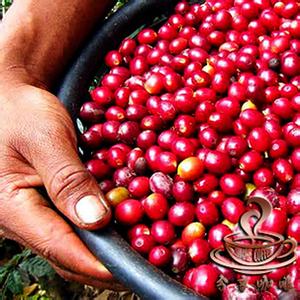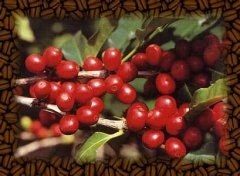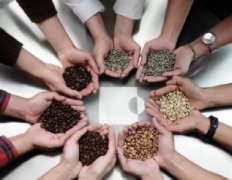Fresh and Bright Ethiopian Coffee Estate Fine Coffee Flavor Characteristics Description

Ethiopia's Yirgacheffe coffee is petite, but gentle and sweet. As the home of coffee, Ethiopia's millennia of growing and processing traditions have resulted in high-quality washed Arabica beans. Light baked with unique lemon, floral and honey sweet aromas, soft fruit acids and citrus notes, fresh and bright taste. No milk, no sugar, let the rich texture and unique soft floral brush your taste buds, leaving endless aftertaste…
Yegashefi is a small town, 700- 21,000 meters above sea level, synonymous with Ethiopian fine coffee. It is a wetland since ancient times, and the old saying "Yirga" means "settle down" and "Cheffe" means "wetland". The way coffee is produced and the flavor is so prominent that Ethiopian coffee farmers compete to be proud of their coffee with Yegashfi flavor, which has become Africa's most famous coffee producing area.
At first, the coffee trees in Yegashefi were planted by European monks, but later by farmers or cooperatives. Yegashefi is actually organized by surrounding coffee communities or cooperatives, including: Hafusa, Hama, Biloa A large amount of coffee production (95%) is done by small shareholders, with an average yield of 561 kg per hectare. For centuries, small shareholders of Ethiopian coffee farms have been producing a variety of high-quality coffee types. The secret to producing good coffee is that coffee farmers have developed a coffee culture under suitable conditions through generations of repeated learning of the coffee growing process, which mainly consists of farming methods using natural fertilizers, picking the reddest and fully ripe fruits and processing them in clean conditions. Ethiopian coffee varies in quality, nature, and variety due to differences in elevation, region, location, and even land type. Ethiopian coffee beans are unique due to their natural characteristics, including "size of coffee beans,""shape,""acidity,""quality,""flavor" and "aroma." These characteristics give Ethiopian coffee its unique natural qualities, and Ethiopia usually acts as a "coffee supermarket" for customers to choose from.
In December 1994, the Constitution of the Federal Democratic Republic of Ethiopia was enacted. The constitution stipulates that Ethiopia will adopt a federal system and a parliamentary cabinet system after the election, with a term of office of five years. National elections were held in May 1995. On August 22, the Federal Democratic Republic of Ethiopia was established. Meles became Prime Minister as Chairman of the Majority Party in the House of People's Representatives. On May 14, 2000, Ethiopia held a national election, in which the Ethiopian Revolutionary Front defeated other opposition parties by an absolute majority to retain power. In October, a new federal parliament and government were established. The presidents of both houses and Prime Minister Meles were elected for re-election. The original cabinet was also retained with the approval of the parliament. In October 2001, May adjusted the government structure and reshuffled the cabinet, adding the Ministry of Youth, Sports and Culture and the Ministry of Taxation, and established a new cabinet composed of 18 ministers. [3]
On October 28, 2015, he was elected as a member of the UN Human Rights Council for a term of office from 2016 to 2018. Ethiopia is dominated by mountainous plateaus, mostly subordinate to the Ethiopian Plateau, and the central and western parts are the main part of the plateau, accounting for 2/3 of the whole territory. The Great Rift Valley of East Africa runs through the whole territory, with an average altitude of nearly 3,000 meters. It is known as the "Roof of Africa". The terrain around the plateau gradually declines. The Darol depression in the north drops to 113 meters below sea level, the lowest point in the country. The Red Sea coast is a narrow strip of plain. The desert and semi-desert areas in the north, south and northeast account for about 25% of the country's area. Dashan Peak in the West Gate Mountains is 4,623 meters above sea level, which is the highest peak in Ethiopia. By the 1950s and 1960s, many African countries had become independent one after another, and adopted green, yellow and red as their national flags, so they were called "pan-African colors". Ethiopia is one of the ancient African countries, with a long history of more than 3000 years, giving green, yellow and red three colors a deeper origin in this land. Historically, they have been associated with the liturgy of the Coptic Church, enshrined as symbols of the Trinity of the Father, the Son and the Holy Spirit, embodying the three virtues of loyalty, hope and mercy advocated by human freedom. These three colors also represent three regions of Ethiopia: Tikrit (red), Amhara (yellow), and Theoya (green). Green represents fertile land, mild climate and abundant plant resources, and also symbolizes hope for the future; yellow symbolizes peace and fraternity, and also represents the people's determination to build the country; red symbolizes that the people are ready to shed blood to defend the motherland.
Important Notice :
前街咖啡 FrontStreet Coffee has moved to new addredd:
FrontStreet Coffee Address: 315,Donghua East Road,GuangZhou
Tel:020 38364473
- Prev

Panamanian boutique Coffee Manor kotowa Manor Sun Coffee Origin, Development, History and Culture
Palmyra (Rainforest Alliance Certification) this brand of coffee is grown in Catuai near the Baru Volcano Park. It has a typical Panamanian Bouqete high-altitude coffee flavor. Sour will not be too exciting, sweet nuts and vanilla chocolate flavor. S of nuts, Palmyra is actually the highest yield of La Esmeralda coffee, accounting for about 70% of the whole family coffee output complex floral aroma
- Next

A brief introduction to the History and Culture of the Origin and Development of Coffee in Ethiopian Coffee Manor
Yega Xuefei is a small town, 700-21000 meters above sea level, synonymous with Ethiopian boutique coffee. It has been a wetland since ancient times. The ancient saying "Yirga" means to settle down and "Cheffe" means a wetland. The mode of production and flavor of coffee here are so outstanding that Ethiopian coffee farmers compete to take pride in the flavor of their coffee, and thus become Africa.
Related
- Does Rose Summer choose Blue, Green or Red? Detailed explanation of Rose Summer Coffee plots and Classification in Panamanian Jade Manor
- What is the difference between the origin, producing area, processing plant, cooperative and manor of coffee beans?
- How fine does the espresso powder fit? how to grind the espresso?
- Sca coffee roasting degree color card coffee roasting degree 8 roasting color values what do you mean?
- The practice of lattes: how to make lattes at home
- Introduction to Indonesian Fine Coffee beans-- Java Coffee producing area of Indonesian Arabica Coffee
- How much will the flavor of light and medium roasted rose summer be expressed? What baking level is rose summer suitable for?
- Introduction to the characteristics of washing, sun-drying or wet-planing coffee commonly used in Mantenin, Indonesia
- Price characteristics of Arabica Coffee Bean Starbucks introduction to Manning Coffee Bean Taste producing area Variety Manor
- What is the authentic Yega flavor? What are the flavor characteristics of the really excellent Yejasuffi coffee beans?

